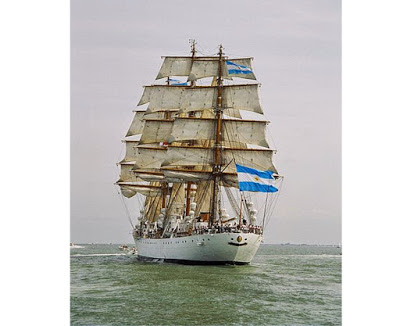A U.S. hedge fund wanted their money back on debt they were owed by the country of Argentina. Here’s the interesting way they went about making a point.
In 2001, Argentina defaulted on over $100 billion in debt. In the years that followed, the country discharged 93% of its debt, causing major losses for bondholders. The U.S. hedge fund, NML Capital, was part of the remaining 7% that hadn’t been paid.
In 2012, NML Capital still owned over $1 billion of Argentine debt, but Argentina was unwilling to pay. NML Capital had been having trouble collecting, even with a U.S. court awarding them several billion dollars in damages, because Argentina’s assets were protected by sovereign immunity laws.
An Argentine Navy ship, the Libertad, was sailing across the Atlantic in October of 2012, and this was when the hedge fund found their moment to strike in true repo-man fashion. They tracked the ship using the internet, and when the ship altered course from a planned stop in Nigeria due to worries over piracy, the ship docked in Ghana. After the ship docked, NML Capital filed suit in a Ghana court and asked for an injunction to seize the ship. They argued that this was to partially fulfill payment on Argentina’s debt. The judge in Ghana granted the request and ordered Argentina to pay $20 million to the court which would then go to NML Capital before the ship could be refueled to leave. Argentina refused.
The majority of the 326 person crew of the Libertad, which is a tall-mast sailing vessel used in training sailors of the Argentine navy, left the ship, leaving only the captain and a few other sailors with the ship.
The “standoff” lasted 10 weeks until an international tribunal for laws of the sea ordered Ghana to release the ship, agreeing with Argentina’s claim that warships, under a U.N. convention, are immune from civil claims in foreign ports. The ship finally left the port and returned to Argentina.
The Argentine government called the hedge funds that owned their debt, “vulture funds”, and continued to refuse to make any debt repayments to them. The battle continued and the U.S. Supreme Court got in on the action on June 16, 2014. They were going to decide if they would hear Argentina’s appeal on the previous rulings that had ordered Argentina to pay back the billions of dollars they owed on their debt. Argentina was at risk of defaulting on their next debt payment of $13 billion that was to be due on June 30th if they lost their appeal to the Supreme Court or if the court decided not to review the case.
The Supreme not only declined to hear the appeal case but also ruled in a 7-1 decision that bondholders could issue subpoenas to banks so they could trace Argentina’s assets around the world. Argentina, in the mean time, all but ignored the court’s decision. This placed the country in contempt of court by U.S. District Judge Thomas Griesa.
In April 2016, after 15 years of Argentina being held out of the global bond market, the country finally agreed to pay their creditors. They ended up paying the hedge funds $4.65 billion, from a deal struck in February 2016, and the rest of the creditors in April. The total came out to be $9.3 billion.


